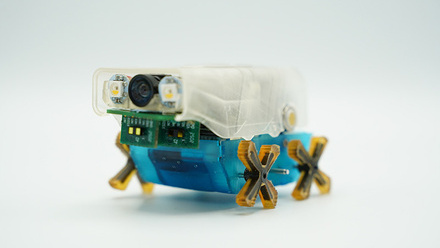The role of rheology
Dr Shona Marsh from Netzsch Analysing and Testing on the role of rheology in our daily lives and the instruments and techniques used in measuring this important material property.

Many are surprised at how many everyday activities involve products that have been considered and developed using rheology. An example of something we all used this morning that will have been rheologically tuned to behave in a certain way is toothpaste. To ensure the paste does not flow out of the tube unless squeezed, and remains on top of the toothbrush bristles, it must possess certain rheological properties.
Other examples from our daily activities include shower gel, body lotion, eye drops, shaving foam, cosmetics, nail polish, spreadable butter, yoghurt, tomato ketchup, custard, jelly, etc. Rheology has also played a role in the production of the plastic containers these products are stored in, the tyres on our cars and the roads we drive on – essentially anything that can or has flowed at one point. All of these products have tailored rheological properties that make them behave in a certain way, or a different way, for a specific application and for storage.
As the technology for measuring rheology has advanced, so has the development of the materials. Asphalt and bitumen, manufactured for our roads for example, are now polymer modified to allow for changing temperatures, conditions and heavier vehicles, while also requiring less maintenance.
As we move to more battery-powered technology, the need to process and characterise the rheological properties of battery slurries becomes increasingly prevalent, particularly when behaviour during processing influences the performance of the product. The slurry must be rheologically stable (homogeneous), yet still be able to coat the substrate evenly.
As more additives and fillers are used in materials, the rheological behaviour of these systems are influenced by particle size, shape, density and volume fraction. As more plastic products have been introduced into our lifestyles, new environmentally friendly polymers are developed and they need to be investigated for performance, including flexibility, strength and degradation. Rheometers can measure these materials under relevant conditions to help define and enhance them.
While for surgeons working with bone cement, dentists working with curing fillers or doctors injecting subcutaneous medicines or vaccines, a rheometer can even simulate mastication and study the breakdown of foods with saliva. For patients suffering with dysphagia – a disorder affecting swallowing – achieving the suitable viscoelasticity is crucial for their health.
For food manufacturers, having that luxurious feel of ‘melt-in-your-mouth’ chocolate is crucial for business and strongly influenced by rheological properties. In fact, many manufacturers will want to tailor the rheology of consumer products to feel or look expensive. It is clear that rheology, and hence the use of rheometers, is impacting almost everything in our lives – it puts the science and numbers to all materials that are not stiff solids.
Rotational rheometry
Over the last two decades, the technology of a modern-day rheometer has advanced in leaps and bounds. Measurements are carried out by sandwiching a sample between two plates. In early instruments, the upper plates would rotate applying a deformation force (stress) directly to the sample. The sample’s deformation (strain) is monitored by a position sensor.
Today, the choice of applying a stress or strain directly can be selected by the user. Knowing the values of shear stress, shear strain and shear strain rate means different rheological properties can be calculated.
Verifying viscosity

A common term in rheology is viscosity, used to describe a material’s consistency. Viscosity is the resistance of a material to flow. High viscosity means more resistance to flow which exhibits a thicker consistency. Lower viscosity exhibits a thinner consistency as there is less resistance to flow. Foods, cosmetics and pharmaceuticals will contain viscosity modifiers to either provide a more luxurious feeling or better tasting product, or to improve its stability.
Viscosity can be measured on a modern rheometer or viscometer. A rotational rheometer is a more versatile and sensitive solution for the expanding range of important properties that can be measured. Typically, a viscometer employs a mechanical bearing that limits the speed and torque capabilities of the instrument, whereas a rheometer uses an ultra-low friction air bearing.
For material, process or production tests requiring simple flow measurements on Newtonian materials (where viscosity is independent of shear rate), a viscometer can be used. However, the performance of a rheometer allows far greater characterisation of flow, deformation and even the tackiness of a material for Newtonian and non-Newtonian materials.
Yield stress
Consumer products benefit from having a yield stress which is another commonly measured rheological property. It is the reason why ketchup needs forceful encouragement to leave its glass bottle and it makes sure toothpaste stays on top of the toothbrush bristles. In fact, most things you have to squeeze out of a tube or pump from a bottle will have a yield stress.
At rest these materials behave as a solid, it means your ketchup will stay as a segregated dipping sauce and not spread or flow on your plate.
Yield stress varies as a function of the temperature and timescale during which the stress is applied. Applying a stress ramp, as you would using the material, can quickly measure a material’s yield stress and is a major feature of a modern rheometer.
Thixotropic behaviour
Viscosity is not just dependent on temperature or the flow conditions (shear rates) to which it is subjected, it can also depend on time. When a material’s viscosity does not recover immediately after shearing, for example mixing or shaking, then we term the recovery as thixotropic behaviour.
The time-dependent nature of the viscosity and intrinsic structure to rebuild can be a desirable property or occasionally a natural phenomenon of the formulation. Following application, paints and varnishes often behave in this way – the viscosity slowly rebuilds and allows time for the ridges from the paintbrush to fill in and even out, creating a smooth, surface finish.
We see this material property in many applications and sample types in dispersions such as inks, oral medicines (indigestion relief), adhesives, solder pastes, grease and intumescent coatings.
The ability for data capture, sampling rate and the monitoring of a sample over very slow ‘at rest’ shear rates now allows these measurements to be easily conducted.
Viscoelasticity
The design and components of the rheometer’s drive motors have, over time, become lighter and more refined, reducing the system’s inertia and allowing for oscillatory measurements to be undertaken, something that distinguishes the air-bearing rotational rheometer from a simple viscometer.
Through oscillation testing, samples can be characterised as viscoelastic solids, liquids or gels. Ultimately, this will determine how a material will behave over time and is useful for comparing the stability of different formulations. In addition, samples can be tested for any structural changes from temperature or time by monitoring the shear modulus. This can be useful for those curing materials, including curable resins, rubbers or even photo-polymers that cure under a UV light. A modern rheometer can couple to a variety of accessories to enhance the capability of testing an even wider variety of materials.
Capillary rheometry
Whatever method is selected to measure rheology, it is important the results are meaningful. It is desirable to measure under conditions that are simulating a process condition or application. Capillary rheometers are designed to operate at much higher shear rates, often with stiffer materials, which means rheological behaviour can be investigated under processes such as extrusion or injection moulding.
These instruments are therefore commonplace in the polymer industry where the relationship between shear and extensional viscosity to molecular weight, polydispersity and chain branching can be explored. Such properties can influence the behaviour during processing, and variations between polymer suppliers (and even batches) can have a significant impact on processing performance and ultimately the quality of the final product.
Artefacts such as degradation, melt fracture and wall slip, can all play a role in affecting processing and can be detected using a capillary rheometer. This can potentially save companies revenue through wasted materials as processing conditions can be optimised in the lab using rheological information.
Capillary rheometers are prominent in other sectors measuring materials such as ink, food and personal care products. If a material is processed and extruded, a capillary rheometer can closely replicate these conditions and determine the behaviour and suitability of different formulations or sample types.
The ambiguity and fear of this science should become eradicated as rheometers become even simpler to use, considering rheology is so crucial for new developments of exciting materials.
Did you know?
- The word rheology comes from the Greek ‘rheo’ (to flow) and ‘ology’ (to study).
- Rheology has a biblical origin from when the prophet Deborah observed ‘mountains that flowed’.
- The term ‘Deborah Number’ was then coined by early rheologists to indicate the fluidity of materials under specific conditions, so that even solid-like materials are considered to flow.
- Early techniques of measuring viscosity and rheology include the Weissenberg Rheogoniometer and simple u-tube viscometers.
- Today, instruments such as rotary viscometers, flow cups, rotational rheometers and capillary rheometers are more commonplace opening the discipline to other applications including the manufacturing of chocolate.







